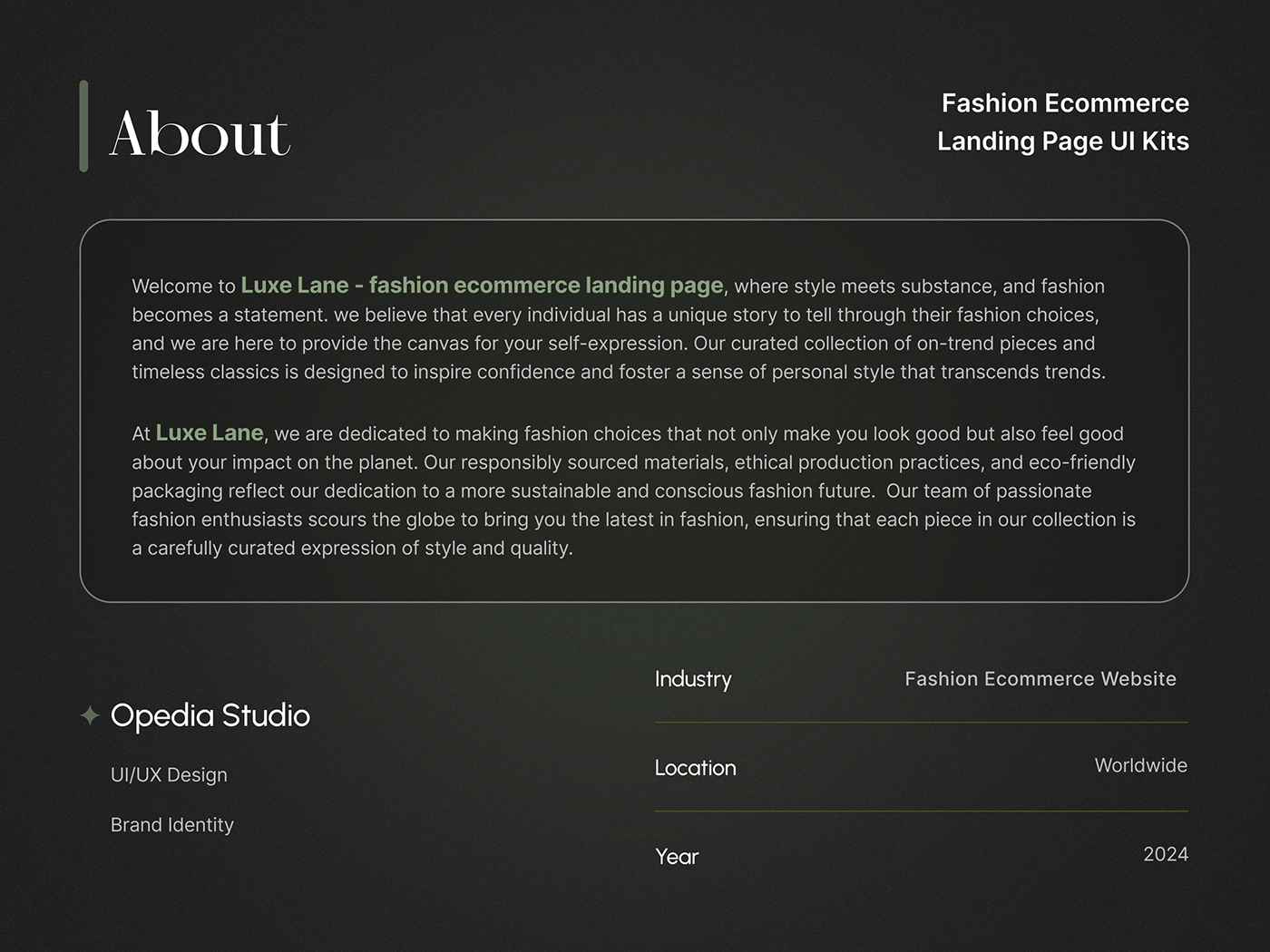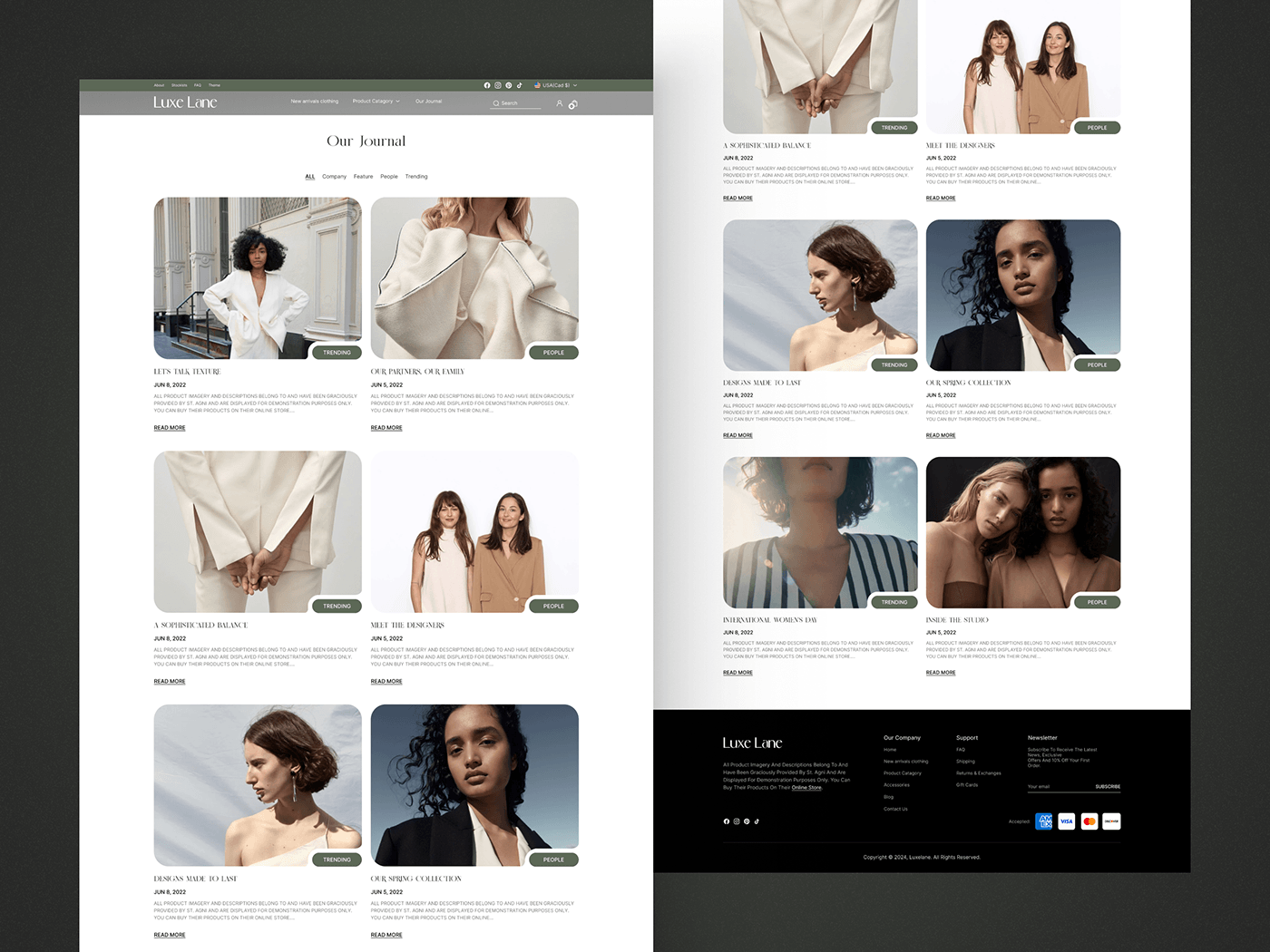Clothing E-Commerce Landing Page Website UI Design
In the ever-evolving world of e-commerce, creating a standout landing page for a clothing website is crucial for capturing and retaining customers. A meticulously designed UI (User Interface) not only enhances user experience but also boosts conversion rates. This article delves into the intricate details of crafting an impeccable clothing e-commerce landing page UI design, guiding you through every essential element to ensure your site ranks high on search engines and appeals to your target audience.
Understanding the Importance of UI Design in E-Commerce
User Experience (UX) and Customer Retention
A well-designed UI directly influences user experience (UX). In the context of e-commerce, a seamless UX can significantly reduce bounce rates and increase customer retention. Users are more likely to stay longer and make a purchase if the navigation is intuitive, the layout is clean, and the information is easily accessible.
First Impressions Matter
The landing page is often the first interaction a potential customer has with your brand. Hence, it must leave a lasting positive impression. A visually appealing and functionally robust UI sets the tone for the rest of the shopping experience, encouraging users to explore further.
Key Elements of a High-Quality Clothing E-Commerce Landing Page
1. Visually Engaging Hero Section
The hero section is the focal point of your landing page. It should feature high-quality images of your latest or most popular clothing items. Ensure the images are crisp and professionally shot to highlight the textures and details of the fabrics. Accompany these visuals with compelling headlines and a clear call-to-action (CTA) to guide users toward your desired action, whether it’s shopping the collection or signing up for a newsletter.
2. User-Friendly Navigation
An intuitive navigation bar is essential for a smooth shopping experience. Organize categories logically (e.g., Men, Women, Kids, Accessories) and include a powerful search function. Sticky navigation bars are a great option, as they stay visible as users scroll, making it easier to jump to different sections of the site.
3. Responsive Design
With a significant portion of e-commerce traffic coming from mobile devices, a responsive design is non-negotiable. Ensure your landing page looks and functions perfectly across all devices, from desktops to smartphones. This includes optimizing images, buttons, and text for smaller screens.
4. Fast Loading Times
Page speed is a critical factor in both user experience and SEO rankings. Compress images, leverage browser caching, and use a content delivery network (CDN) to ensure your landing page loads quickly. A delay of even a few seconds can lead to increased bounce rates.
5. Clear and Compelling CTAs
Effective call-to-actions are crucial for guiding users toward conversion. Use bold, contrasting colors for your CTA buttons and place them strategically throughout the page. Phrases like “Shop Now,” “Get Started,” or “Join Now” should be concise and action-oriented.
Design Best Practices for a Clothing E-Commerce Landing Page
1. High-Quality Visuals
Invest in professional photography and high-resolution images. Visual appeal is paramount in the clothing industry, as customers rely heavily on images to make purchasing decisions. Use zoom features and multiple angles to give users a comprehensive view of the products.
2. Trust Signals
Incorporate trust signals such as customer reviews, testimonials, and security badges. These elements build credibility and reassure users that your site is trustworthy. Featuring well-known brand logos or media mentions can also enhance your site's reputation.
3. Personalization and Recommendations
Leverage data to offer personalized recommendations. By showing products based on browsing history or previous purchases, you create a tailored shopping experience that can significantly boost sales.
4. Seamless Checkout Process
A cumbersome checkout process is a major deterrent for potential customers. Simplify your checkout process by minimizing the number of steps required to complete a purchase. Offer guest checkout options and multiple payment methods to cater to diverse user preferences.
Enhancing SEO for Your Clothing E-Commerce Landing Page
1. Keyword Optimization
Conduct thorough keyword research to identify terms your target audience is searching for. Integrate these keywords naturally into your headings, subheadings, product descriptions, and meta tags. Avoid keyword stuffing, as it can negatively impact readability and SEO performance.
2. Engaging and Informative Content
High-quality content is key to improving your search engine rankings. Write detailed product descriptions, style guides, and fashion tips to engage your audience. Use blog posts to cover trending topics in the fashion industry, driving organic traffic to your site.
3. Meta Tags and Alt Text
Optimize your meta tags, including title tags and meta descriptions, with relevant keywords. Use alt text for images to enhance accessibility and provide search engines with context about the visual content on your page.
4. Internal and External Linking
Implement a robust internal linking strategy to guide users to related products and informative content on your site. Additionally, acquire backlinks from reputable fashion blogs and industry websites to improve your site's authority and search engine rankings.
Leveraging Social Proof and User-Generated Content
1. Customer Reviews and Testimonials
Encourage satisfied customers to leave reviews and testimonials. Display these prominently on your landing page to build trust and provide social proof. Positive feedback can significantly influence potential customers' purchasing decisions.
2. Social Media Integration
Integrate your social media channels into your landing page. Use social feeds to showcase user-generated content, such as customers wearing your products. This not only enhances engagement but also provides authentic visual proof of your clothing line in real-world settings.
3. Influencer Collaborations
Collaborate with fashion influencers to reach a wider audience. Feature influencer endorsements and collaborations on your landing page to add credibility and attract their followers to your site.












